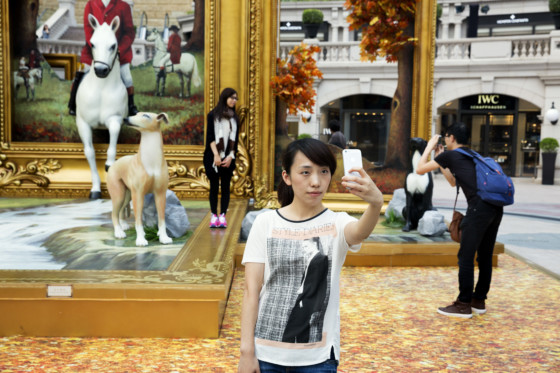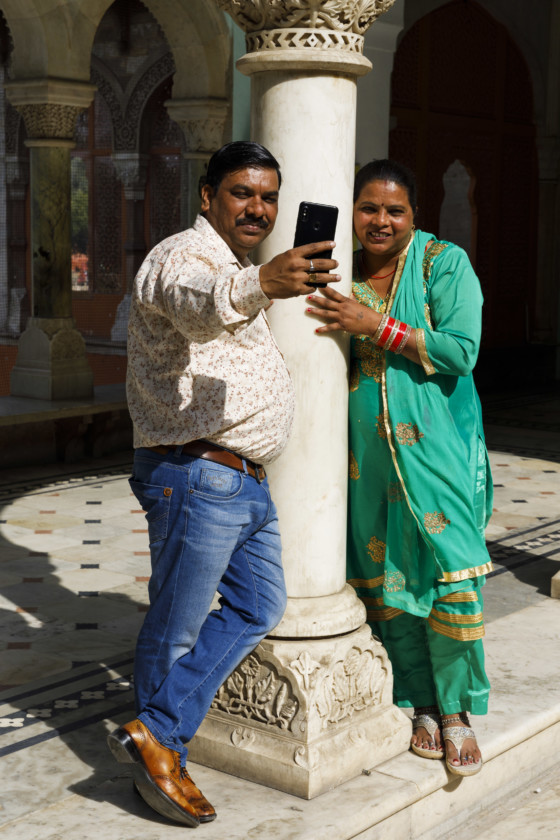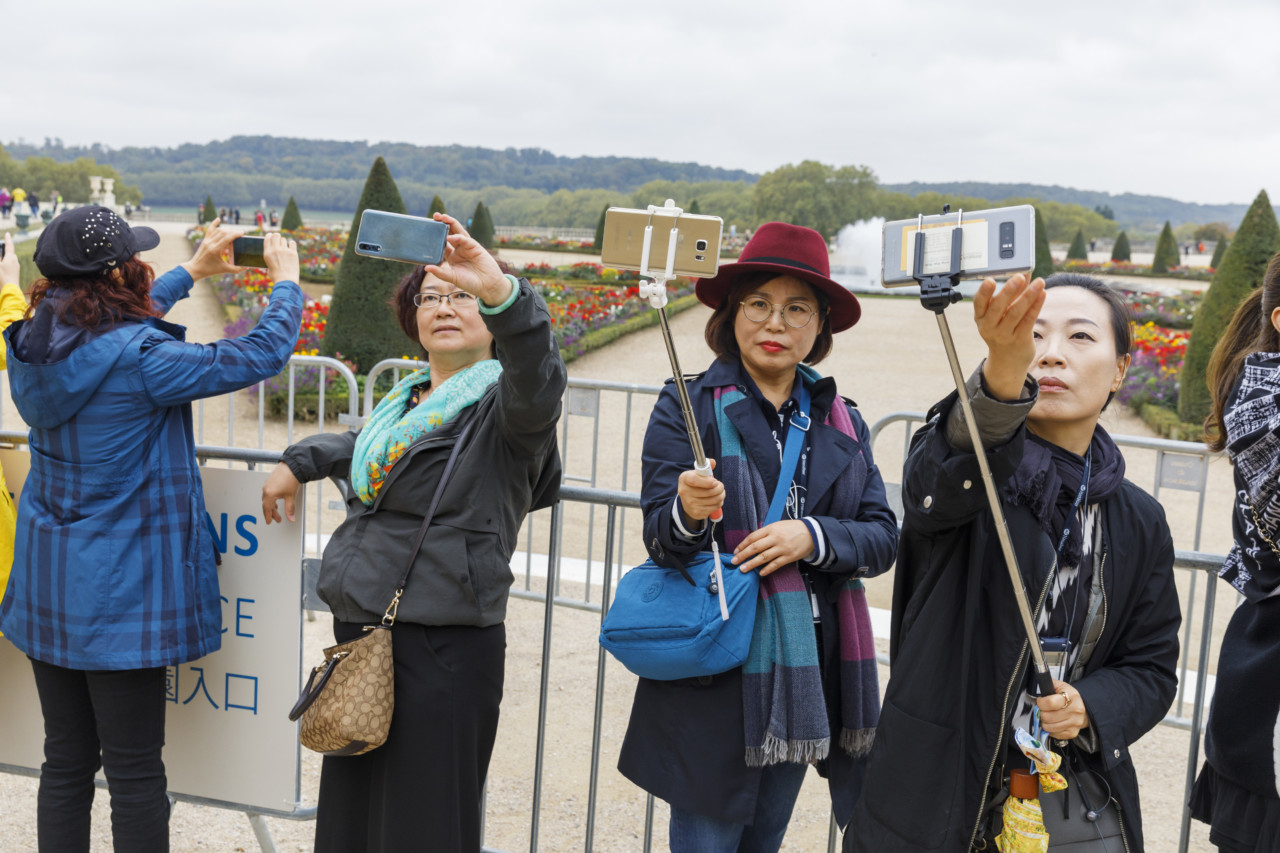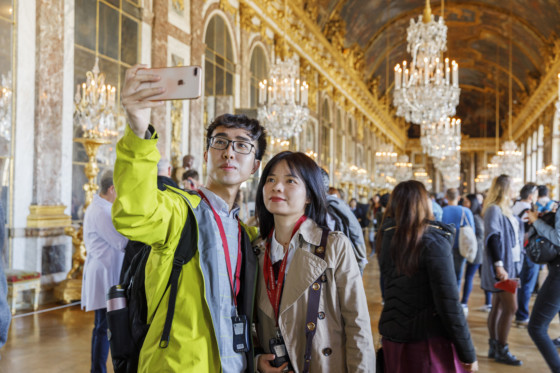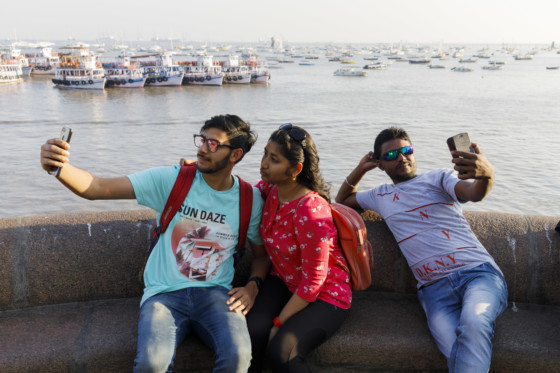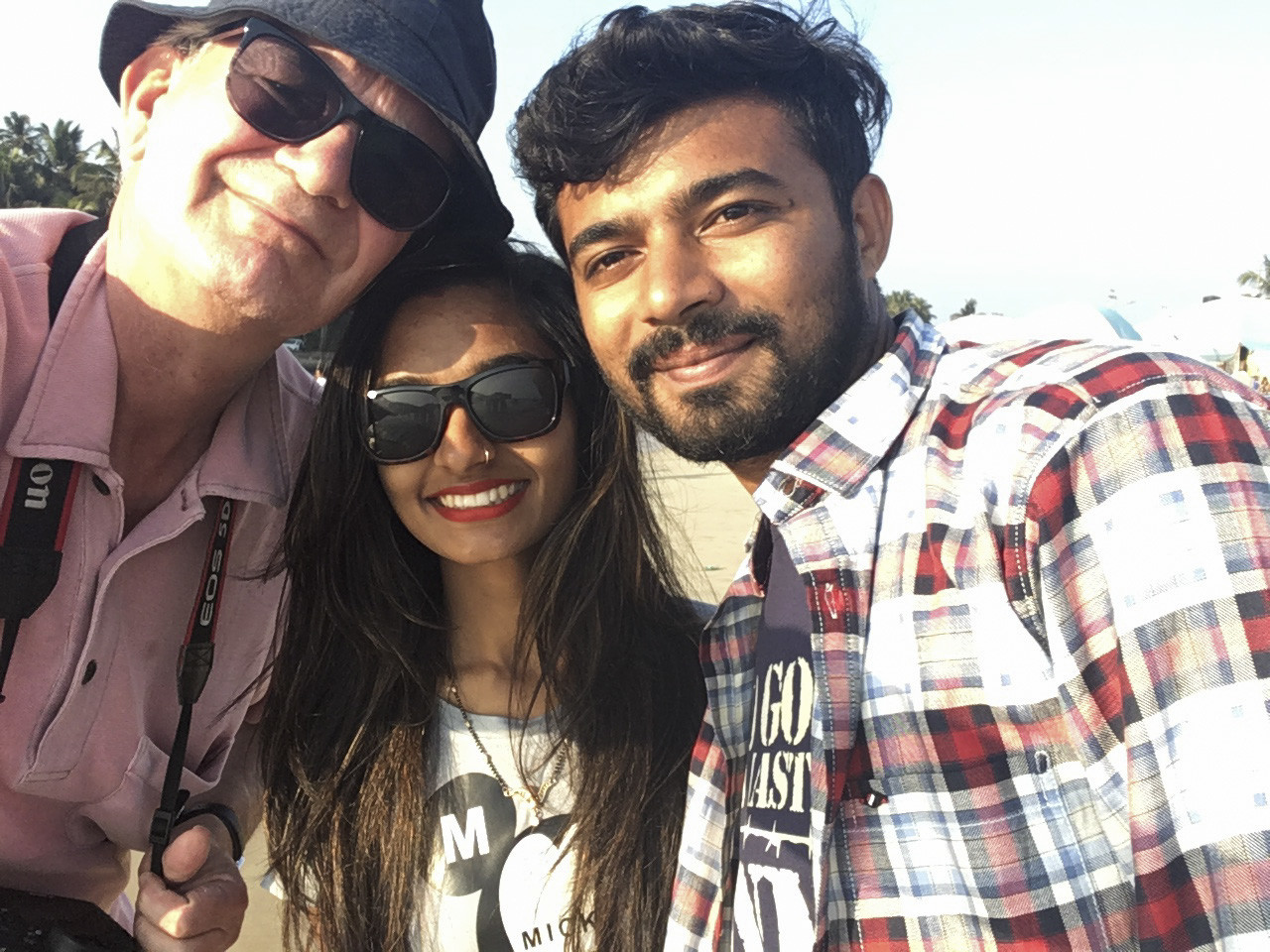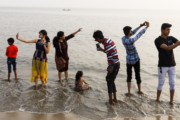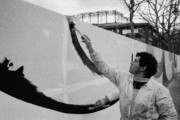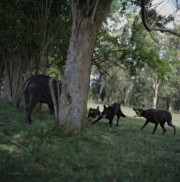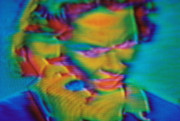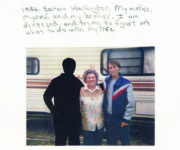Death by Selfie
Martin Parr discusses his new book, the mindboggling number of selfies floating through the electronic ether, and the tenacious appeal of the photobook
As much as Martin Parr’s work is often associated with the home comforts of suburbia, his eye for the holiday is just as keen. In his latest book, Death by Selfie, he turns his lens on perhaps the defining tourist activity of the last decade. His series of candid – and at times bizarre – photographs of holidaymakers around the world, captures the ritual of self-shot smartphone portrait in all its earnest absurdity.
The book’s title takes inspiration from India, “the world leader for selfie taking”, by Parr’s reckoning. It’s a claim based in part on a macabre statistic around how many people have died as a result of taking selfies; either falling backwards from clifftops, edging too close to fires or being washed away by freak waves mid-picture. In 2015, 27 people died taking selfies in India. That figure rose to 68 in both 2016 and 2017. Parr’s theory follows that if more people have died due to selfie-taking in India than in anywhere else in the world, then there must be more selfie-taking going on in the first place.
Not that his book condemns the practice. In keeping with much of his work, Death by Selfie showcases the strangeness of the everyday with affection and humor. Over a phonecall, Parr discussed how selfie sticks have changed tourism, and the phenomenon of the smartphone self-portrait.
Death by Selfie is published by Super Labo, and will be available September, 2019
What were the origins of this project?
I’ve been photographing tourism for twenty… thirty years now, and of course since the smartphone has been introduced the whole way in which we deal with tourist locations has changed. I think the biggest single impact has been the smartphone and therefore the selfie.
You describe it in the book as a phenomenon. Is there a place that first cemented this impression in your head?
Venice is a story I keep coming back to. I go there frequently, I’ve been there again this summer. It’s overrun with tourists and is being destroyed, in a sense, by the number of people trampling through it. Of course it was one of the first places where the selfie stick was for sale.
[The book] then became about India. India is a country that’s obsessed with selfies. More-so than Europe. And of course the only way to prove this – and this is not proved at all – is this observation around how many people have been killed by selfies. Hence the title of the book.
Was it just the statistical usefulness, or was there something in dying by selfie that interested you?
I just thought it was an amazing statistic to track. Every death by selfie is entered into this specific section on Wikipedia, and I got a bit obsessed with it. It just shows how dangerous taking selfies can be.
"Previously I’d be taking photos of people in tourist locations and they’d have their backs to the camera. Now I get their fronts!"
- Martin Parr
Many of the photos depict selfie-taking as a group activity.
Generally speaking it’s couples or maybe families, but you do sometimes see these massive groups taking them, which is a bit of a strain! You’ve got to have a massive extension on your stick!
What typifies a tourist selfie?
It’s always in front of a location. The great thing for me is that previously I’d be taking photos of people in tourist locations and they’d have their backs to the camera. Now I get their fronts! So it’s a breakthrough for me.
The photos include selfie-takers from a wide age-range, whereas people would mostly associate selfies with young people.
When the smartphone first came out I did a whole series on people using them around the world. At that point it was very unusual to see someone in their sixties or seventies with a smartphone. And now of course everyone’s got one, it doesn’t matter about the age. That is something that’s changed.
"I love things that are ephemeral, things that are changing. As a documentary photographer my job is to understand the way the world is changing and to document that"
- Martin Parr
Did you talk to people about what they were going to do with their selfies once they’d taken them?
Not really, because that’s not my job, although being a European, particularly in India, people would come and have a selfie with me. If I’m on the beach in Goa it’ll happen three times an hour. Guaranteed.
In the book’s introduction you reference the thousands of images of yourself that must be online as a result of this. Does that loss of control bother you?
It doesn’t bother me in the slightest. I find it amusing, just as I find it funny that there are thousands of pictures I’ve taken for people in tourist locations who don’t know they’ve got a Martin Parr on their cameras. Why would they? I love that those people don’t know who you are from Adam, but see you with a camera so assume you know something about it.
As popular as they are, selfies have proven a contentious trend. Where do you stand?
I welcome all these trends. I love things that are ephemeral, things that are changing. As a documentary photographer my job is to understand the way the world is changing and to document that. So how could you not include this in such work? It’s such an integral part of who we are now. And it’s all new! Ten years ago this didn’t exist, and I can’t see their demise.
Is there anything about the volume of images being produced that overwhelms or concerns you?
It’s boggling. The number of selfies taken everyday must be billions. And of course so many of them just disappear, because people don’t download them. They certainly don’t print them out.
And some platforms, Instagram or Snapchat for example, the images only exist for 24 hours…
Exactly. This is why having a book still scores pretty highly for me, because books don’t disappear. Nobody throws a book away in the way they would a magazine, or a selfie might get lost. A book is there forever.








